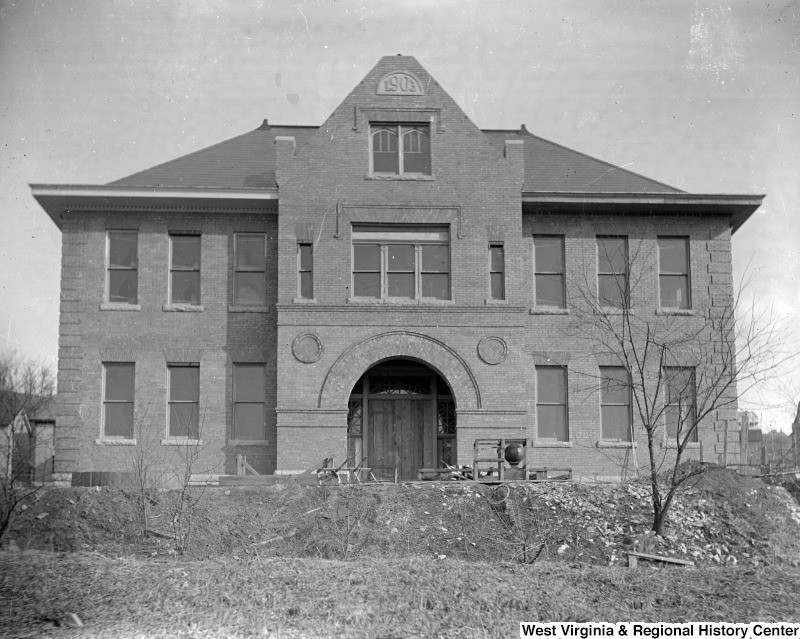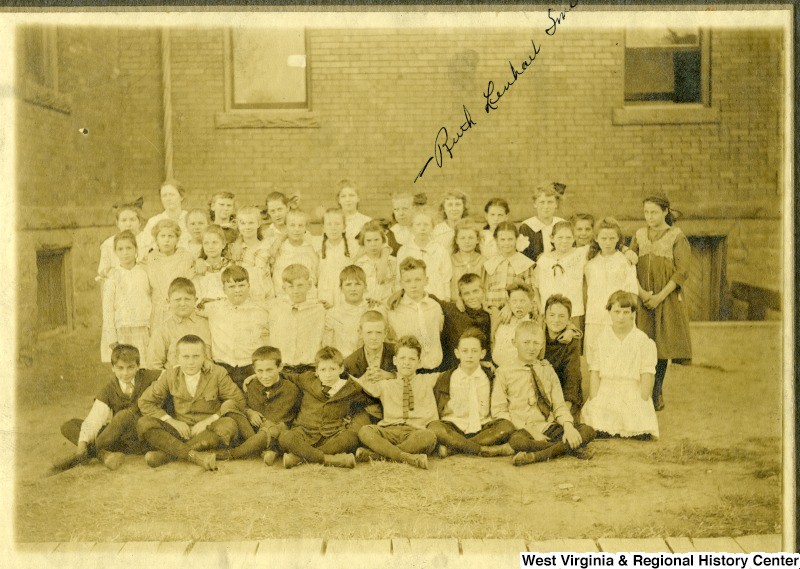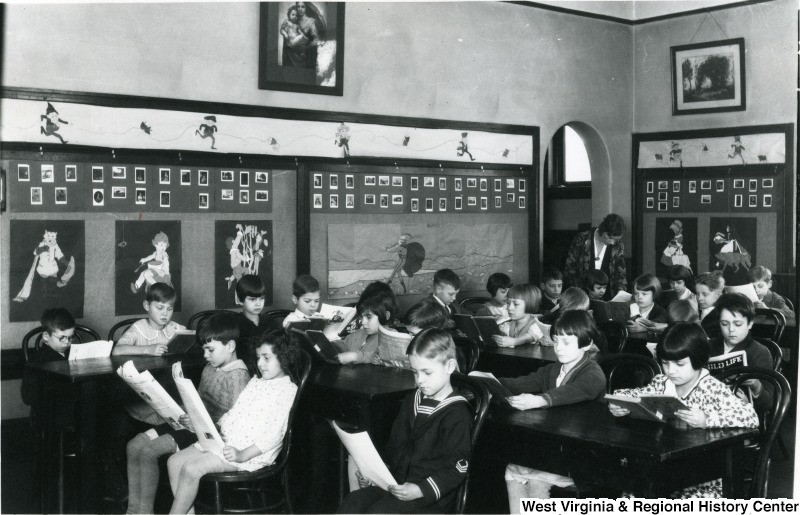McLane Manor (Seneca Elementary School)
Introduction
Text-to-speech Audio
Images
Seneca Elementary School, constructed in 1904, accommodated Morgantown's growing population, especially in the Sunnyside neighborhood. Photo courtesy of West Virginia and Regional History Center, WVU Libraries.

A class portrait of students at Seneca Elementary School. Photo courtesy of West Virginia and Regional History Center, WVU Libraries.

A possible image of a Seneca Elementary School classroom from the early twentieth century. Photo courtesy of West Virginia and Regional History Center, WVU Libraries.

Backstory and Context
Text-to-speech Audio
The history of the school system in Monongalia County can be divided into four periods, the third in which Seneca Elementary was constructed. The first period, often referred to as “The Beginnings,” lasted from 1864-1875 after the West Virginia Legislature established the free school system in 1863. In February 1868, the Morgantown Independent School District was formed and a committee of five commissioners created the Board of Education.1
The second period, “The Little Red School House Era,” extended until the end of the century. While most schools were still one room school houses, Alexander L. Wade had introduced the beginnings of the more recognized graded education system.2 In 1881, the students were divided into five grades. The following year Morgantown High School was constructed to accommodate the upper grades.3
The third period, which corresponds to Seneca School’s construction, began with the building of the glass factories, Morgantown and Kingwood Railroad, the Tin Plate Mill at Sabraton, and the development of nearby coal mines.4 The rapid growth of the city resulted in the overcrowding of schools and, beginning in 1899, newer, larger elementary schools were built. Seneca Elementary School was constructed in 1904. Prior to 1904, the German Baptist Church in Seneca was rented for use as a school.5 However, the number of students soon made that location impractical. Originally, the Seneca School was proposed as a four-room building, but because of the continual and rapid growth of the Seneca neighborhood, the plans were altered to call for a six-room structure.
As population grew, students were transferred to different schools to better distribute the population. In the coming decades, the Seneca School could no longer accommodate the number of children so two rooms were added.6 In the 1930s, West Virginia changed to the county unit system, making it easier for government funding to be distributed fairly throughout the schools. In 1938, school bonds were issued for the construction of new schools, additions to the Seneca, Wiles Hill, First Ward and Second Ward Buildings, and needed repairs.7
Seneca Elementary School educated young children of Morgantown until the end of the school term in 1967. While the school no longer housed classrooms, the building was kept within the school system and housed the county school library and the county resources center. From 1969 to 1974, Seneca Elementary School was listed as the “Instructional Materials Center” and “North Central W.Va. Learning Resources Center” in the Morgantown City Directories. Between 1983 and 1985, the Seneca School was purchased by Melvin Friend, who turned the building into McLane Manor Apartments. Today, the building is still used as student housing by Friend Rentals.
Sources
1. James Morton Callahan, History of the Making of Morgantown West Virginia: A Type Study in Trans-Appalachia Local History (Morgantown: Morgantown Printing and Binding Company, 1926), 222.
2. Lynn Hastings, “Monongalia County School and Local History 1864-1960”, Monongalia County Board of Education. Book 1. Unpublished manuscript, 64.
3. West Virginia University Public History Option, Morgantown: A Bicentennial History (Morgantown, West Virginia: Morgantown Historical Society, 1985), 36.
4. Hastings, Book 1, 64.
5. Hastings, Book 8 “Morgantown School District,”109.
6. Callahan, History of the Making of Morgantown West Virginia, 290.
7. West Virginia University Public History Option, Morgantown, 38.
Images
“Fourth Ward School, Morgantown, W. Va.” Photo. West Virginia and Regional History Center, West Virginia University Libraries. Accessed January 2018. http://wvhistoryonview.org/catalog/wvulibraries:51999
“Seneca Elementary School, Morgantown, W. Va.” Photo. Circa 1920. West Virginia and Regional History Center, West Virginia University Libraries. Accessed January 2018. http://wvhistoryonview.org/catalog/wvulibraries:12954
“Students in Grade School Classroom, Morgantown, W. Va.” Photo. West Virginia and Regional History Center, West Virginia University Libraries. Accessed January 2018. http://wvhistoryonview.org/catalog/wvulibraries:16991
Research compiled by Malori Stevenson. Edited by Elizabeth Satterfield and Pamela Curtin.
